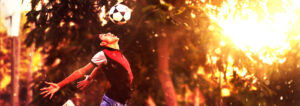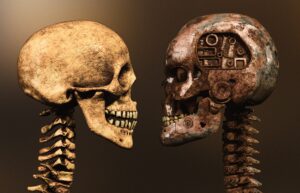Perhaps one of the greatest confrontations that the pandemic has brought to scientific disciplines today has been to expose the need for collaboration between different forms of knowledge and ‘know-how’, a matter especially evident in the battles that hospitals wage around the world.
Design is not the exception, and it has been promoted as a necessary response in the health emergency we are living, offering a vast range of tools and knowledge that come from the disciplines that make it up: industrial, fashion, graphic, textile, urban and architectural design.
Within this field of knowledge, there are many proposals for action, which aim to collaborate with other avant-garde proposals. Such is the case of “Social Design”, “Sustainable Design” or Design Thinking — a fashionable methodology that contends that a problem is solved, in part, by adopting a complex perspective.
Perhaps one of the greatest confrontations that the pandemic has brought to scientific disciplines today has been to expose the need for collaboration between different forms of knowledge and ‘know-how’, a matter especially evident in the battles that hospitals wage around the world.
Behind each of the actions that design undertakes in search of answers to current problems —within the guild and even outside of it—, design finds a superhero with superpowers, who can face the greatest challenges, in each and every single one of the trendy discourses.
Without a doubt, design as a profession, discipline, and field of study has the possibility of contributing with great solutions to diverse human problems. But perhaps before continuing to believe that it is the discipline that will save the world, we would have to look at the enormous shortcoming that it possesses: not knowing or understanding the human animal for which it designs; starting with the confusion revolving around the topic of creativity.
Human beings are creative animals
Creativity is the substance that design believes it can use because of the professional control it has over it. However, there is a superfluous interpretation of this term and of what “being creative” really means.
As Agustín Fuentes mentions in his book “The Creative Spark”, we commonly think that creativity is contained in a person and that some characteristics make us more creative than others. We believe that we are more (or less) creative because of the inclinations or abilities we have to generate solutions, produce ideas or materialize them, especially on a professional level, ideas that are largely based on the definition of this word. Moreover, we tend to prostrate references of creativeness in characters like Mozart or Ludwig Mies van der Rohe.
However, being creative goes beyond the act of creating something. We are creative to the extent that we draw solutions every day, we are creative when we prepare a new dish within our possibilities. Beyond the act in itself, it is important to stress all the baggage that comes with a creative act: because here lies a reference to all the imaginings that influence “a good idea”.
Without a doubt, design as a profession, discipline, and field of study has the possibility of contributing with great solutions to diverse human problems. But perhaps before continuing to believe that it is the discipline that will save the world, we would have to look at the enormous shortcoming that it possesses: not knowing or understanding the human animal for which it designs; starting with the confusion revolving around the topic of creativity.
For example, while facing a blank canvas or a blank page to capture the ideas that are created in the imagination, the references (both in the imaginary and in the immediate environment where that good idea is to be captured) are numerous. The creative act evokes all the people behind a brush, the ink or the keyboard to write; they are tools that someone else imagined and created. Even if we think of reciting a poem, behind it there are thousands of years of the evolution of the language with which one tries to express an idea, and the result of the manifestation of that idea is also accompanied by the perception of the one who performs the creative act.
Creativity transcends the creative act and is a chain of cooperation (Fuentes, 2017). The manifestation of creativity is given by whatever that precedes it, but it is also a cooperative gesture for what will ensue. And it is precisely this collaboration that has allowed us to reach this point in our development as a species. Understanding with due depth the characteristics that make us human, social, collaborative and creative beings, should be a key element in the formation of every designer.
From superheroes to simple human beings
Although there are numerous efforts in design graduate programs around the world to make reflections from the standpoint of the humanities, and to search for interdisciplinary collaborations, the impossibility of making design a humanized practice lies in its structure. The global trend in design schools is to disappear humanistic subjects in undergraduate studies, and that is without mentioning that the relevance of ergonomics as a training axis, which should in fact govern the curricular programs of design schools, is being questioned.
My philosophy is humanistic, and I believe that it is fundamental to know man and his culture so that design can satisfy the needs of the human being, that is why I am in favor of design careers that integrate humanistic subjects; technological subjects are only great tools (Durán, 2002).
The designer is an agent (with the power that this confers), who intuits the problems and hence believes himself or herself to have superpowers, because is capable of understanding a phenomenon and sorting it out in his or her imagination in order to translate it into a product or service that raises the sales of any company. The designer, even when proposing to generate a “social design”, will be transforming that response into another product, into a consumer good; his impact will never go beyond the surface, because he does not know the background, because he does not understand the depth of his praxis, because his intuition is not a sword of omens that allows him to see beyond the obvious, because the designer is not a superhero and his training does not allow him to understand the bio-socio-cultural being for whom he designs. So I wonder, when a designer talks about ‘social design’, from what subjects or seminars could he have understood the social and historical dimension of the human being?
Understanding with due depth the characteristics that make us human, social, collaborative and creative beings, should be a key element in the formation of every designer.
Some people say that “design will be social or it will not be”, but, before becoming social, design requires tools to understand the nature of social beings, and as long as the subjects taught in design schools won’t include a good load of humanities, design will continue to be a factory of supplements for a narcissistic society. In that sense, “social design” will be, in any case, a discourse with an expiration date as ephemeral as fast fashion.
References
Fuentes, Agustín. Creative Spark. 1st ed. New York: Penguin Publishing Group, 2017.
https://www.amazon.com.mx/dp/1101983949/ref=cm_sw_r_oth_api_fabc_hYmaGbZK2258P
Is an Industrial Designer from the National Autonomous University of Mexico (UNAM) and a Doctor in Physical Anthropology from the National School of Anthropology and History (ENAH). Her academic work focuses on linking and fostering the interdisciplinary exchange between Anthropology and Design. She has long experience on ceramic materials at an industrial and artisanal level. Her interests also focus on musical experimentation, as well as gastronomic exploration and Culinary Arts.


